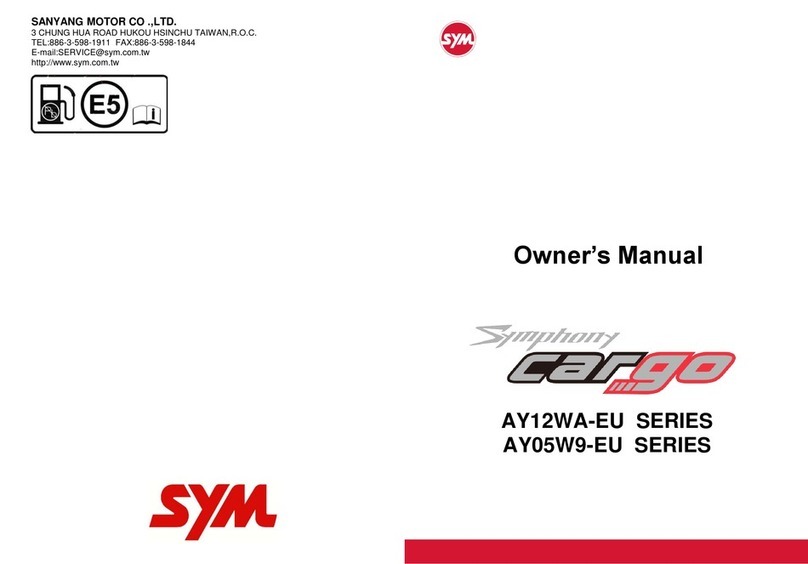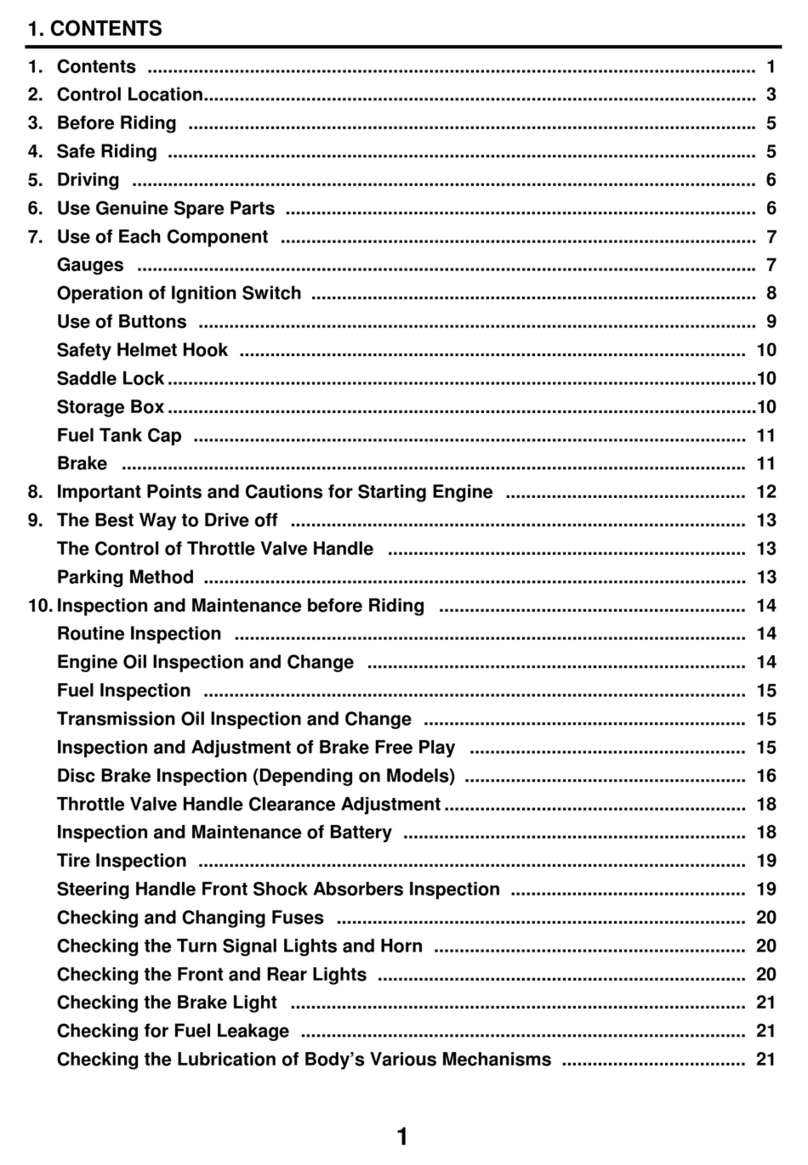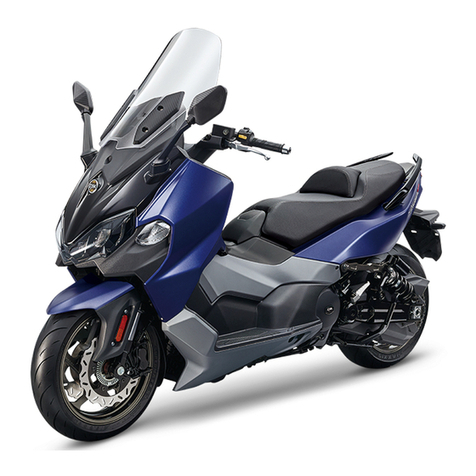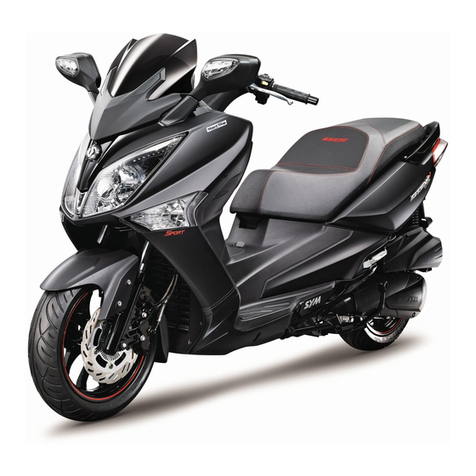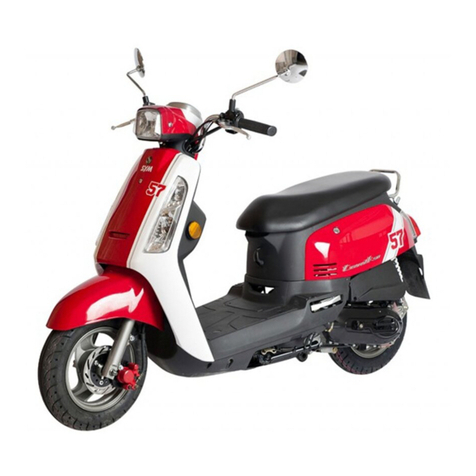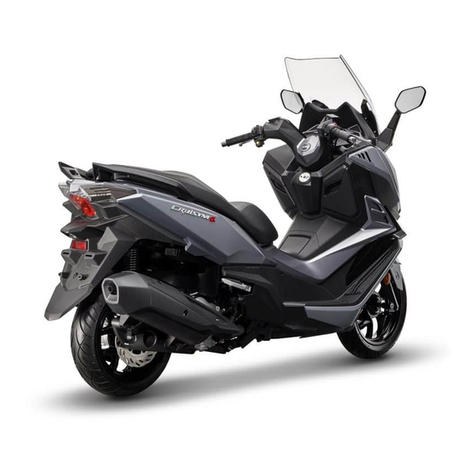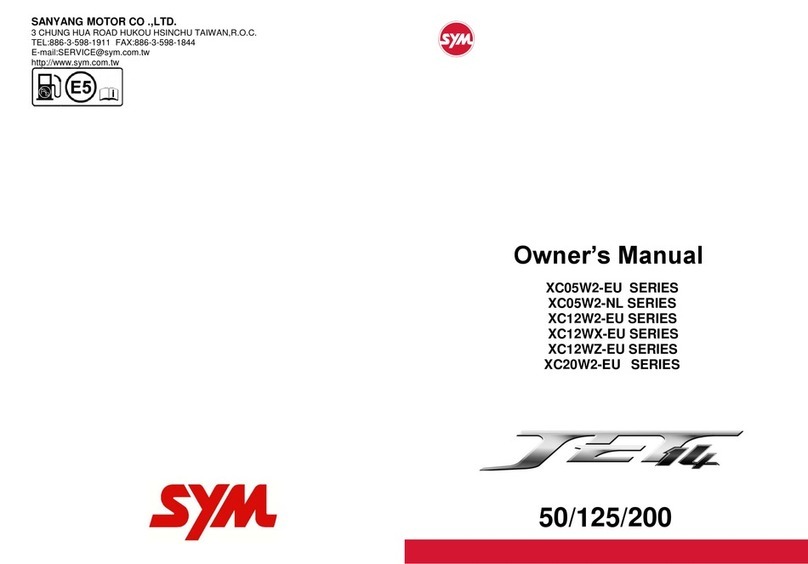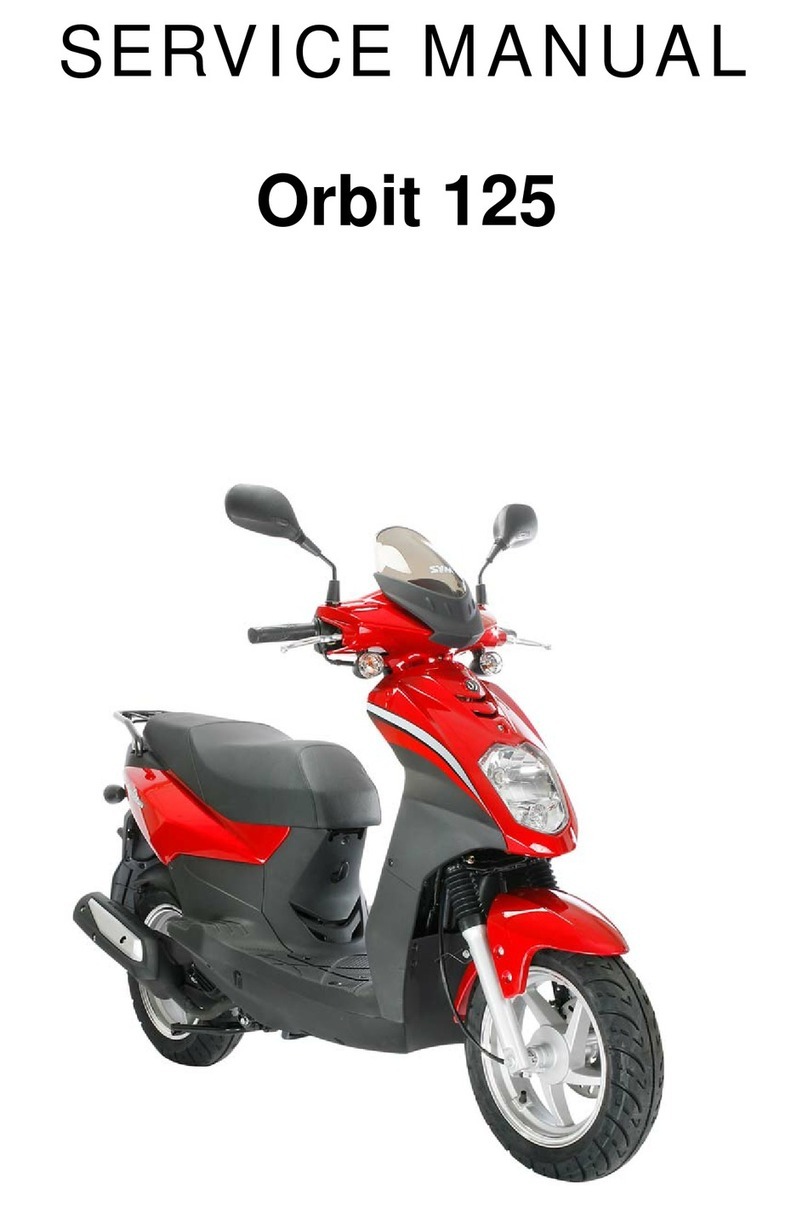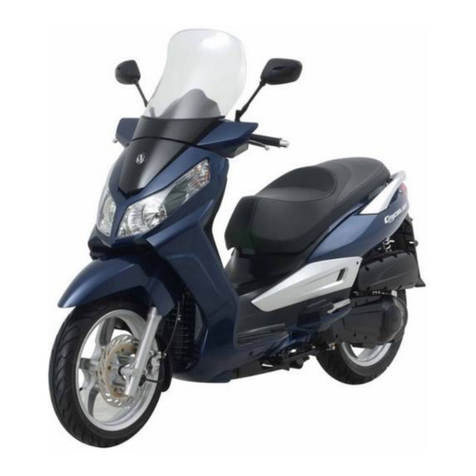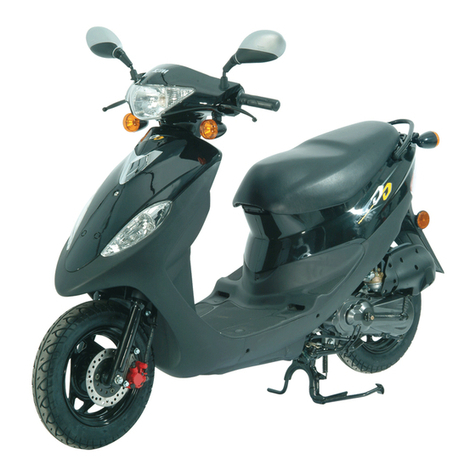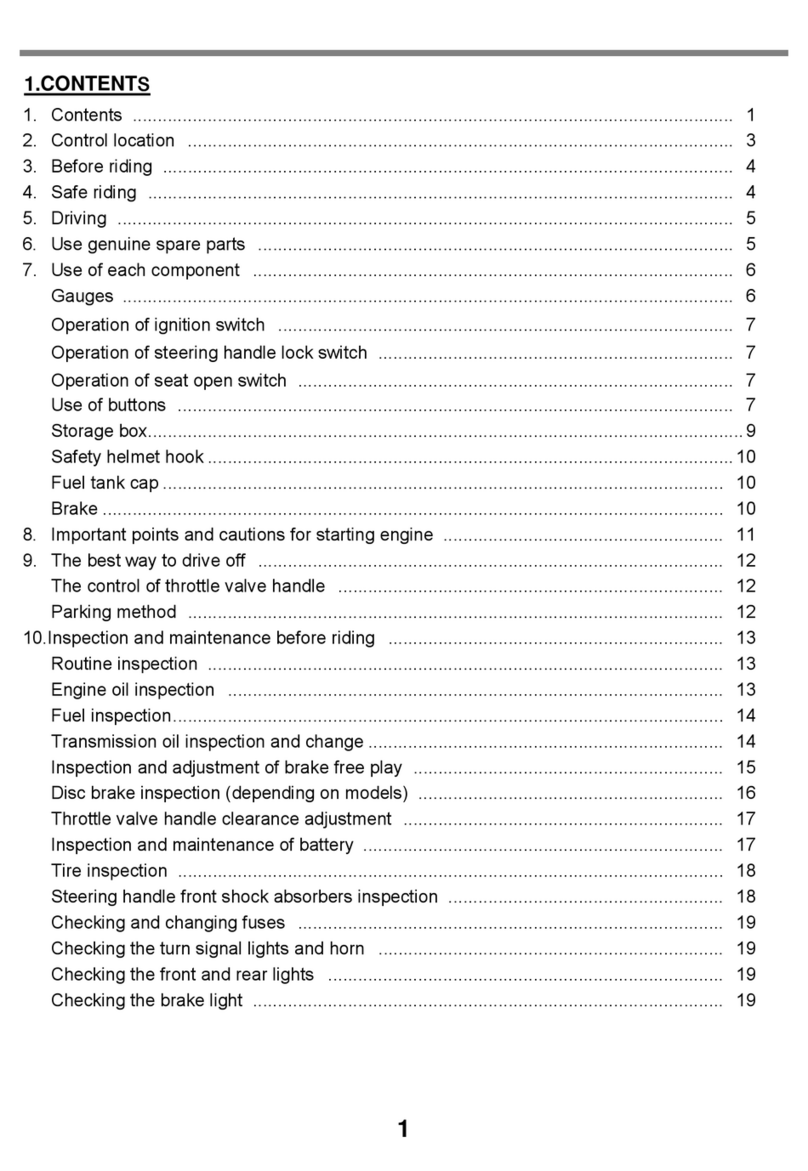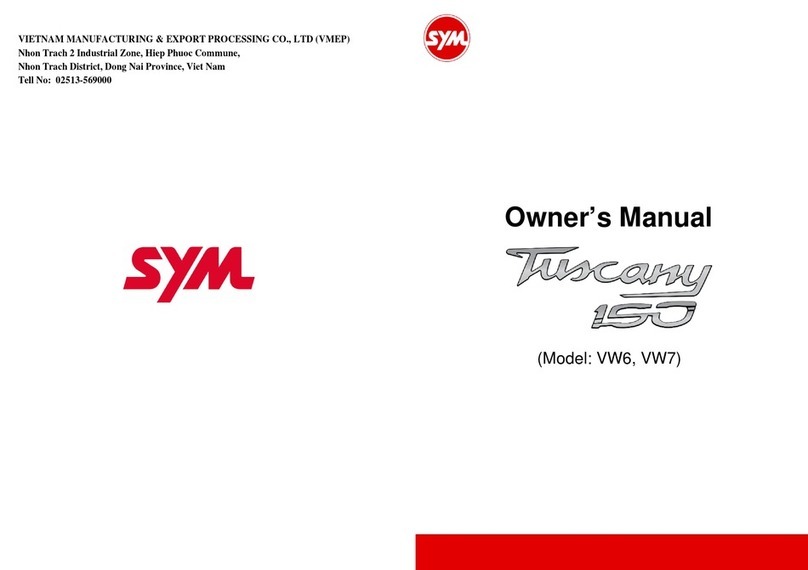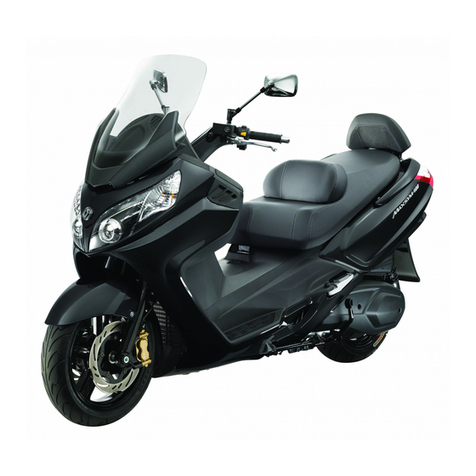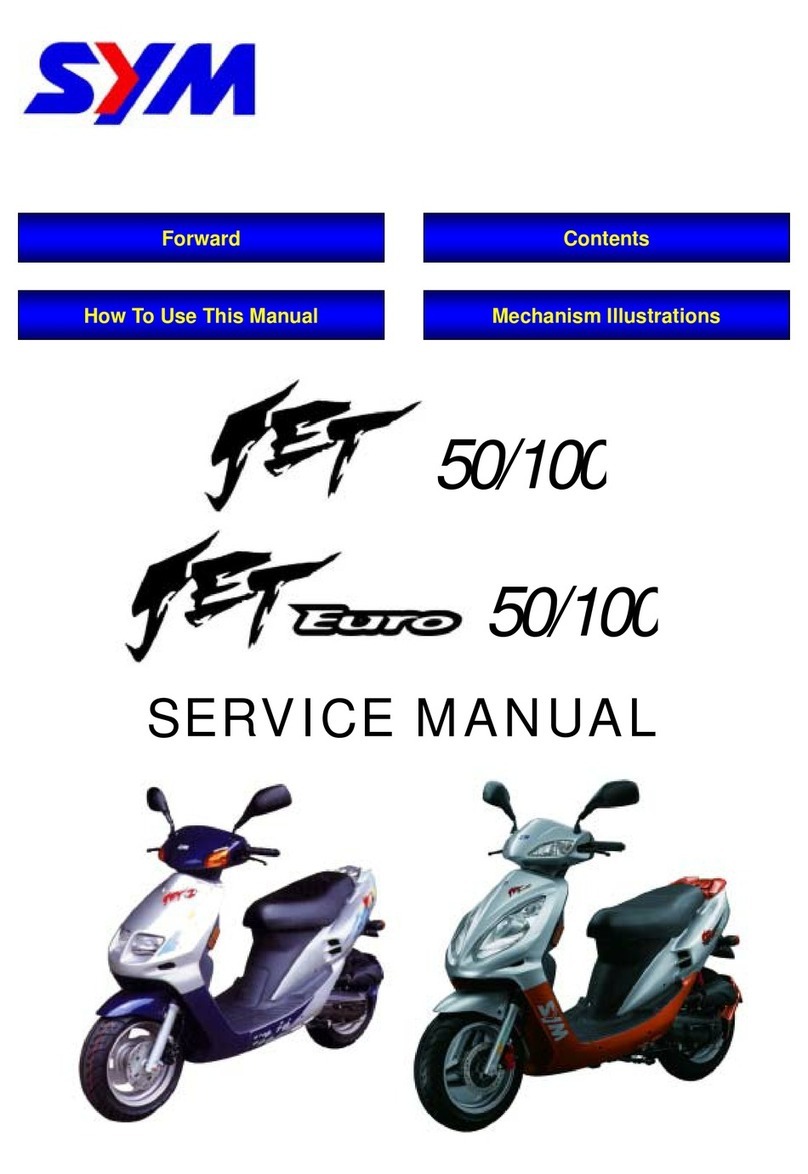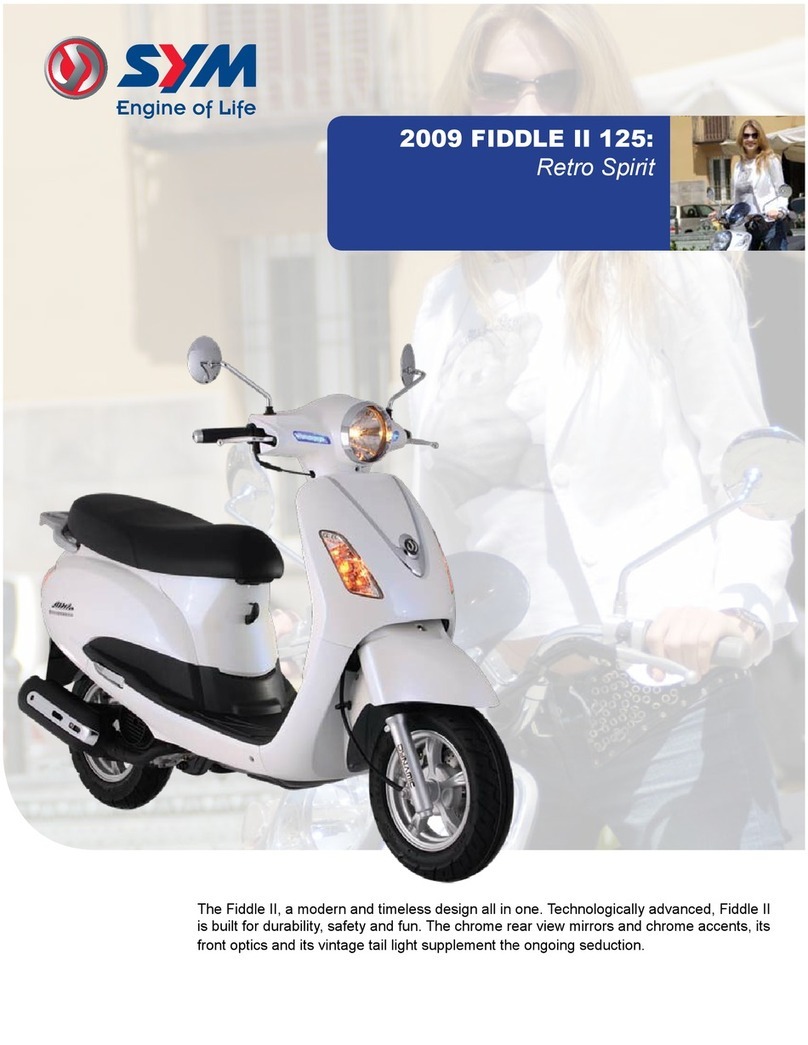5. Riding
6. Use genuine spare parts
6
Operation of the scooter must be only by a person with a valid license to operate the same.
Your safety on the road relates to the way you drive. Never operate this scooter when tired, under the
influence of alcohol, drugs or medication.
Rider’s posture will greatly affect riding safety. Always keep your body’s gravity in the center of the seat, if
your body’s gravity is on the rear part of saddle, the front wheel load will be reduced, and this will cause
the steering handle shaking. Keep the related parts of your body such as arms, palms, lumbar, and toes
relax and ride with the most comfortable posture in order to be able to react quickly whenever it is
necessary. It is dangerous to ride a scooter with an unstable handle.
It will be much easier to make a turn if rider inclines his body inward when turning. On the other hand, the
rider will feel unstable if his body and the scooter do not incline.
The scooter is hard to control on a bumpy, unleveled, unpaved road, try to know the road conditions in
advance, slow down and use your shoulder’s force to control the handle. Always adjust your speed to
the road and traffic condition.
Suggestion: Do not load objects on the front pedals unnecessarily, to avoid affecting the riding safety and
the operation of steering handle.
WARNING:
Be aware of the weight load on the scooter. The scooter will handle different depending on its load.
Over loading the scooter will cause the scooter to become unstable and hard to maneuver, as it may
change the center of gravity, which could result in an accident that could cause injury or death. Do not
exceed the maximum authorized load.
WARNING:
Only carry cargo or luggage in/on places that are specifically designed for carrying cargo or luggage.
Do not place flammable objects, such as rags, paper, plastic, etc. or other objects between body covers
and the engine. Placing objects in these areas could cause a fire or other damage to the scooter, and
serious injury as a result there from.
Suggestion:
To maximize the scooter’s performance and prolong its life:
The first month or first 1000km is the wear- in period for the engine and components. Avoid rapid
acceleration, and keep the speed below 60km/hr.
6. USE GENUINE SPARE PARTS
In order to maintain the scooter’s best performance, each part’s quality, material, and machined precision
must conform with the design requirements. “SYM Genuine Spare Parts” were made from the same
high quality materials used for the original scooter. No parts would be sold to the market until they could
meet the designed specifications through sophisticated engineering and stringent quality control.
Therefore, it is necessary to purchase “SYM Genuine Spare Parts” from “SYM Authorized Dealers or
Franchised Dealers” when replacing spare parts. If you buy cheap or fake substitute parts from the
market, no guarantee can be provided either for the quality or durability thereof. Also, it may result in
unexpected troubles and lower the scooter's performance.
Always use SYM Genuine Spare Parts to keep your scooter pure blood and to ensure its long service
life.
